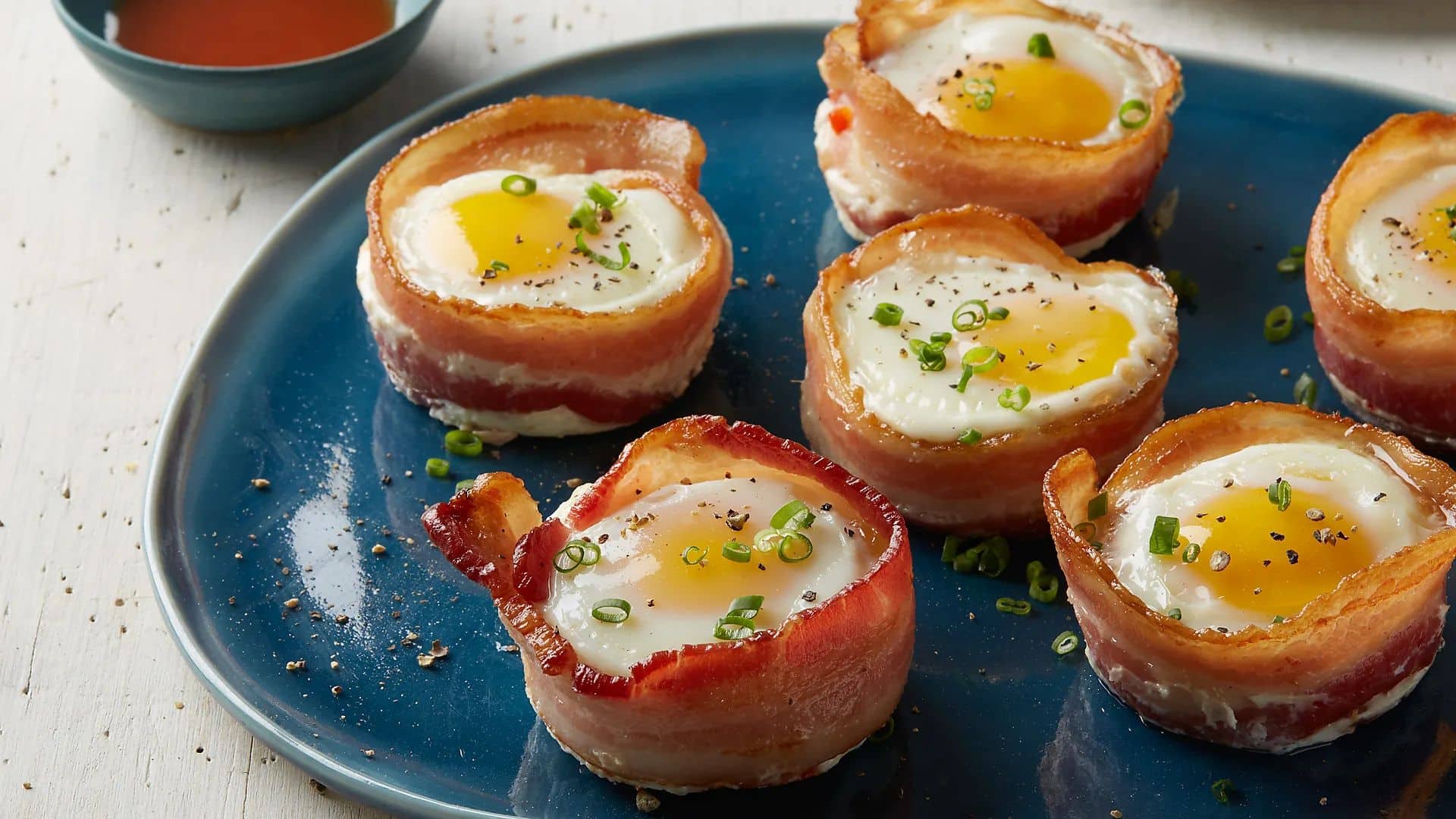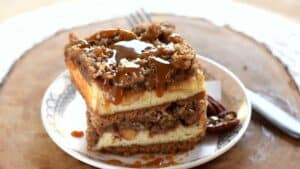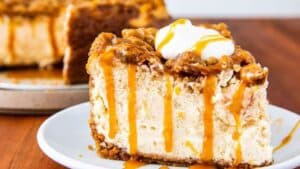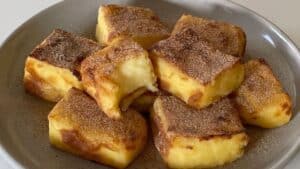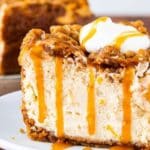Walk into any bustling café at 7:32 a.m., and chances are someone just ordered egg bites. The little steam-bathed, protein-packed bites of comfort have carved out a permanent place on breakfast menus. And no version’s more iconi or more obsessively imitated than the bacon and cheese egg bite. It’s more than a trendy snack. It’s a blueprint of balance, technique, and nostalgia that’s got both home cooks and pros playing around with ratios like they’re developing a new pastry dough.
So we’re going deep. Really deep. This isn’t about tossing eggs in a blender and hitting bake. This is about getting nerdy with emulsification, decoding texture, and knowing which cheese melts like a dream and which clumps like regret. Let’s dive in.
Why Bacon and Cheese Egg Bites Matter More Than You Think
Alright, here’s the deal egg bites are deceptively simple. But scratch the surface, and you’ll find technique that sits at the intersection of classical French custard and modern sous-vide precision.
They’re about structure. About fat-to-protein ratios. About steam, air, and heat working together to make something that holds its shape but still vanishes in your mouth like hot silk.
Bacon and cheese are just the flavor gatekeepers. The actual magic? That’s happening at the molecular level. You might not see it, but your palate definitely notices when it goes sideways.
And while Starbucks popularized the trend in 2017, the method water bath cooking has been around for centuries. Think: terrines, flans, pots de crème. The egg bite is just a leaner, punchier cousin with an American twist.
The Foundation: Egg Ratio and Emulsification

Let’s start with the building blocks eggs and dairy.
Most recipes go for 4:1 eggs to dairy by volume. But that’s the average. The real pros tweak that depending on texture goals. Want silky-smooth, just-set bites? Go closer to 3:1 and add a touch of crème fraîche or even mascarpone for richness without too much liquid.
You need emulsification here. Not just blending. You’re dispersing fat into protein. That’s why a high-powered blender isn’t just helpfu it’s almost non-negotiable. You’re not just mixing eggs and cream; you’re creating a foam that traps air and makes the final bite tender, not rubbery.
Now, if you’re using milk instead of cream to lighten things up, add a yolk or two. That fat brings stability back into the mix, and stability is what stops your bites from weeping like sad soufflés.
Bacon: Smoke, Salt, and Structure
Here’s the trick with bacon it’s gotta be cooked right before you blend. Not crisp like shards of glass. You want it rendered and chewy, so it integrates instead of floating around like bacon confetti.
Go thick-cut if you can. Applewood smoked is classic, but hickory lends more bite. Pros will even cure their own pork belly to control salt and sweetness. But if that’s not on the cards, just choose bacon with no added sugar. Sugar’s gonna brown too fast and make the egg bite smell like breakfast cookies. Not what you want.
Use about 2 oz per 6-egg batch. More than that, and the bacon overwhelms everything. It’s a seasoning, not a star.
Want to take it up a notch? Freeze the cooked bacon, then microplane it into the egg mix. That’s right grate it. It distributes smoky umami like nothing else.
Cheese: The Science of Melt and Stretch
Cheddar is the go-to. But here’s where people mess up they use sharp cheddar, and that’s a problem.
Sharp cheddar separates when heated too long. It gets greasy. Mournfully greasy. What you want is a mild or medium cheddar that still has stretch without the oil slick.
Better yet? Blend cheeses. Gruyère gives body and an alpine nuttiness. Monterey Jack melts like a dream. Even cream cheese has its place just a tablespoon or two smooths everything out.
Avoid mozzarella unless you want stringy egg bites. Which you don’t. You’re not making pizza cupcakes here.
And for the love of texture, don’t cube your cheese and toss it in. Grate it fine. You want it to melt into the eggs, not drop into the bottom of the mold like cheesy anchors.
Cooking Method: Sous Vide vs Oven
This is where the game changes.
Sous Vide is the gold standard. Period. 172°F for 60 minutes gives you a uniform, custardy bite with zero browning. And no crust = more gentle flavor. But not everyone’s got a sous-vide wand hanging out next to their pepper grinder.
Oven is accessible. Use a water bath just like for cheesecake and bake at 300°F for about 30–35 minutes. A silicone mold is your best friend here. Metal conducts too much heat too fast. You’ll get tough edges. And nobody likes a tough edge.
Pro tip? Cover the mold with foil. Steam retention is key. You’re not baking; you’re low-temp steaming in a dry oven.
And always rest the bites before unmolding. Hot egg bites are fragile like your WiFi on a stormy day. Let them set up, and they’ll hold their shape like champs.
Texture: What the Pros Chase

This is where things get obsessive.
The ideal texture is custard-like but springy. Bite should resist just slightly, then melt. Like a savory panna cotta with street smarts.
Achieve this by managing air. Overblend, and you’ll trap too much. The bites puff and collapse. Underblend, and they’re dense like sad omelets. You want that sweet spot just enough air to lighten, not enough to balloon.
Some chefs pass their mixture through a chinois after blending. Yep. A fine mesh strainer. It removes foam and any chalazae (those ropey bits in eggs). That’s the level of finesse we’re talking about.
Flavor Variations and Additions
Once you’ve nailed bacon and cheese, the world’s your oyster. Or mushroom. Or roasted red pepper.
But restraint is your friend. Two mix-ins, max. More than that, and you’re making a frittata, not an egg bite.
Some combos to try:
- Bacon + smoked gouda + chives
- Pancetta + parmesan + spinach
- Prosciutto + ricotta + roasted tomato
Avoid watery vegetables. Bell peppers, tomatoes roast and drain ‘em first or they’ll turn your bites into soup pucks. No one wants that.
Nutritional Breakdown: Not Just a Treat
These things are small but mighty. A standard 2-bite portion (eggs, bacon, cheese, no fillers) hits around 170–200 calories. Around 10–12g of protein. Nearly no carbs. They’re keto dynamite.
But beware the sodium. Between bacon and cheese, you’re getting 400–500mg easy. Want to lower that? Skip the salt in the egg mix. You won’t miss it.
You can sneak in veg for fiber, sure. But the tradeoff is texture, so blanch and dry everything. Wet greens will kill your set faster than you can say “spinach fail.”
Trends: Where Are Egg Bites Going?
Customization is everything now. People want control over their macros, textures, and flavors. That’s why modular egg bite bars where guests can pick base, mix-ins, and toppings are cropping up in high-end brunch spots and even catering setups.
Some chefs are infusing the base with bone broth instead of cream for added collagen. Others are folding in adaptogens like lion’s mane powder. It’s like the 2025 version of the smoothie craze, but hot and savory.
Also: vegan egg bites are making a push. Not gonna lie they’re trickier. Aquafaba helps replicate the fluff, and chickpea flour lends body. But it’s an art. Most versions still taste more like bean mousse than egg custard. Give it a year or two.
FAQs Pros Keep Getting
Can I freeze egg bites?
Yes, but wrap them tight. Air is their enemy. Reheat gently in a covered dish at 300°F to keep moisture.
Why do mine collapse?
You over-aerated or undercooked. Or both. Try blending slower and adding a minute or two to cook time.
Why do mine taste ‘eggy’?
Overcooked. Eggs go sulfuric past 180°F. Dial back the temp or cook time. Also, fresh eggs help. Old ones smell, well… eggy.
Can I use egg whites only?
Sure, but you’ll need fat. Add cream cheese or coconut milk or the result is sponge city.
Final Thoughts: Your Playbook for Better Bites
Bacon and cheese egg bites are more than a viral breakfast hit. They’re a study in precision, flavor layering, and textural mastery.
If you’re a chef, treat them with the same care you give a custard tart. If you’re a home cook, don’t cut corners on dairy, blending, or molds.
Start with the base. Nail the technique. Then go wild because once you’ve got the fundamentals, egg bites are just a canvas. And bacon, well… bacon always brings the party.
So next time someone says, “It’s just an egg bite,” give them a look. You know better now.
Want the next level? Add truffle oil. Just a drop. But you didn’t hear that from me.
